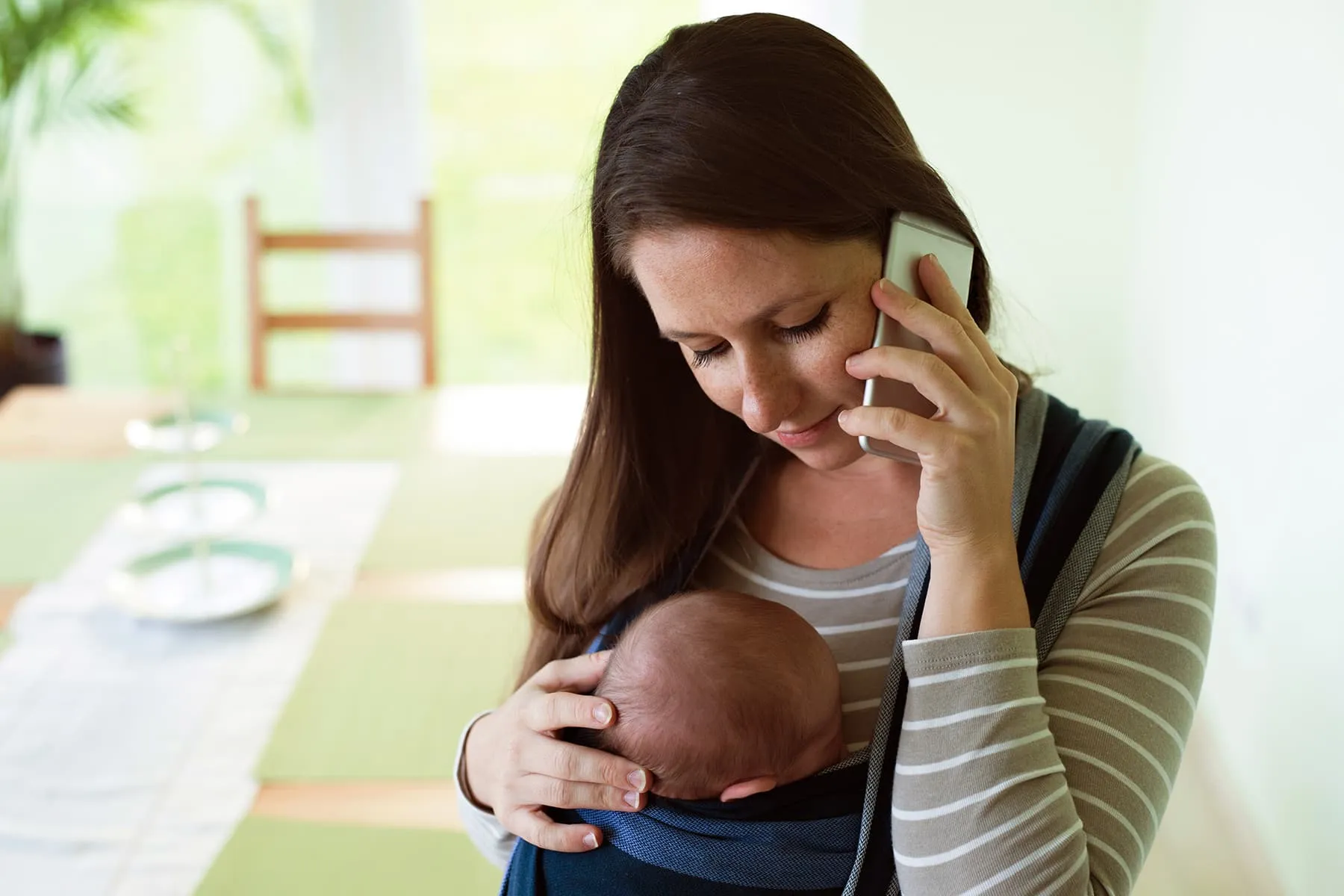
It’s 2 a.m. Your baby is crying and you can’t soothe them. They have a fever and a stuffed nose. Do you call the pediatrician, or do you wait until morning?
New parenthood is full of uncertainty. When you’re a first-time parent, it’s easy to second-guess every decision you make.
“It can be hard sometimes to know when or when not to call,” says Katie Lockwood, MD, a pediatrician at Children’s Hospital of Philadelphia. “I reassure parents to follow their instincts. If something doesn’t feel right or if they’re not sure if something is normal or not, pediatrician offices would rather you err on the side of calling us.”
A few key symptoms can be your guide as you decide whether to grab your phone and call your pediatrician.
How to handle a fever depends on your child’s age. In a baby under 2 months old, a rectal temperature of 100.4 F or higher is an emergency.
“Go straight to the ER,” advises Lockwood. “Sometimes babies can have a serious infection, and the only sign is a fever.” The hospital will do a full workup that includes blood and urine tests, and sometimes a spinal tap.
In older children, the number on the thermometer is less telling than other clues. “Most important is how the child is acting with the fever and how long they’ve had it,” Lockwood says. “If a child has a 101 [degree] fever but they’re really irritable, they won’t eat, they’re not acting like themselves, or they won’t stop crying, that’s concerning to me.” This rule applies for vaccinated children; in unvaccinated infants, most fevers should be seen by a doctor right away.
Three days is usually the magic number for viral fevers to last, she says. Any fever that lasts longer deserves a call to your doctor. It may have turned into a bacterial infection like pneumonia.
These symptoms usually signal a viral infection. On their own, they’re nothing to worry about. But when they’re too intense, they can be a problem.
“The key thing I’m concerned about is dehydration,” says Amy Guiot, MD, an associate professor in the Division of Hospital Medicine at Cincinnati Children’s Hospital Medical Center. “If the child is crying, I want to see tears. If you don’t see tears, they’re headed toward getting dehydrated.”
Other signs of dehydration include:
- Less pee than usual — fewer than 6 wet diapers per day in infants
- Dark urine
- Dry, cracked lips and mouth
- Sunken eyes
- Crankiness
- Sunken soft spot on top of the head (in babies younger than 18 months)
Many stomach viruses that cause vomiting or diarrhea last 24 hours or less, Lockwood says. Call your pediatrician if these symptoms last longer or your child has a fever too. These are more likely signs of a bacterial infection that you need to get treated.
Another big warning sign is a red or black color in the poop or vomit, or flecks that look like coffee grounds. These could be blood. That’s a medical emergency.
Upper respiratory infections like colds are run-of-the-mill for kids, who get up to eight of them a year. Typically they’re viral and they last about 10 days, Guiot says.
Kids may run a fever for the first 3 days. “Then the fever starts going away and that clear nasal discharge is going to become thick, green, and yellow. That just means those infection-fighting cells are called in to fight. It doesn’t mean it’s a bacterial infection,” she says.
A fever that lasts longer than 3 days or symptoms that get worse need a look from your pediatrician. Your child may have gotten an ear infection or other bacterial illness.
If at any point your child has to work harder to breathe, call the doctor right away. You’ll notice your child’s nostrils flare or their ribs suck in with each breath. They may make a funny noise or wheeze when they try to breathe.
A bluish color around the lips or nails means your child isn’t getting enough oxygen. Call 911 right away.
This is one of the toughest symptoms to figure out. Rashes come in many forms and have a lot of possible causes.
A rash that doesn’t bother your child usually isn’t a reason to worry. But if it doesn’t go away in a few days, call your doctor, Lockwood says. Rashes with a fever are a bigger worry because they could signal an infection.
Other possible symptoms to tell your doctor about are:
- A rash that oozes or weeps
- A blistery or bubbly rash
- A rash that looks like a bull’s-eye or target
- Swollen bumps on the skin, along with trouble breathing or swelling of the face
- A rash on a child who looks sick or isn’t acting like themselves
These symptoms also call for a call to your pediatrician right away:
- Trouble waking your child
- Sharp or constant belly pain
- Burning when your child pees, or blood in their urine
- A constant need to pee
- Seizures
If your child’s illness is mild enough to wait until morning, keep a journal. Write a list of symptoms and questions for the pediatrician, Lockwood suggests. This will help guide your talk with the doctor the next morning.
When you call, have notes on hand so you can tell the nurse or doctor your child’s:
- Medical conditions
- History of shots
- Medicine types and doses — both prescribed and over-the-counter
- Temperature






